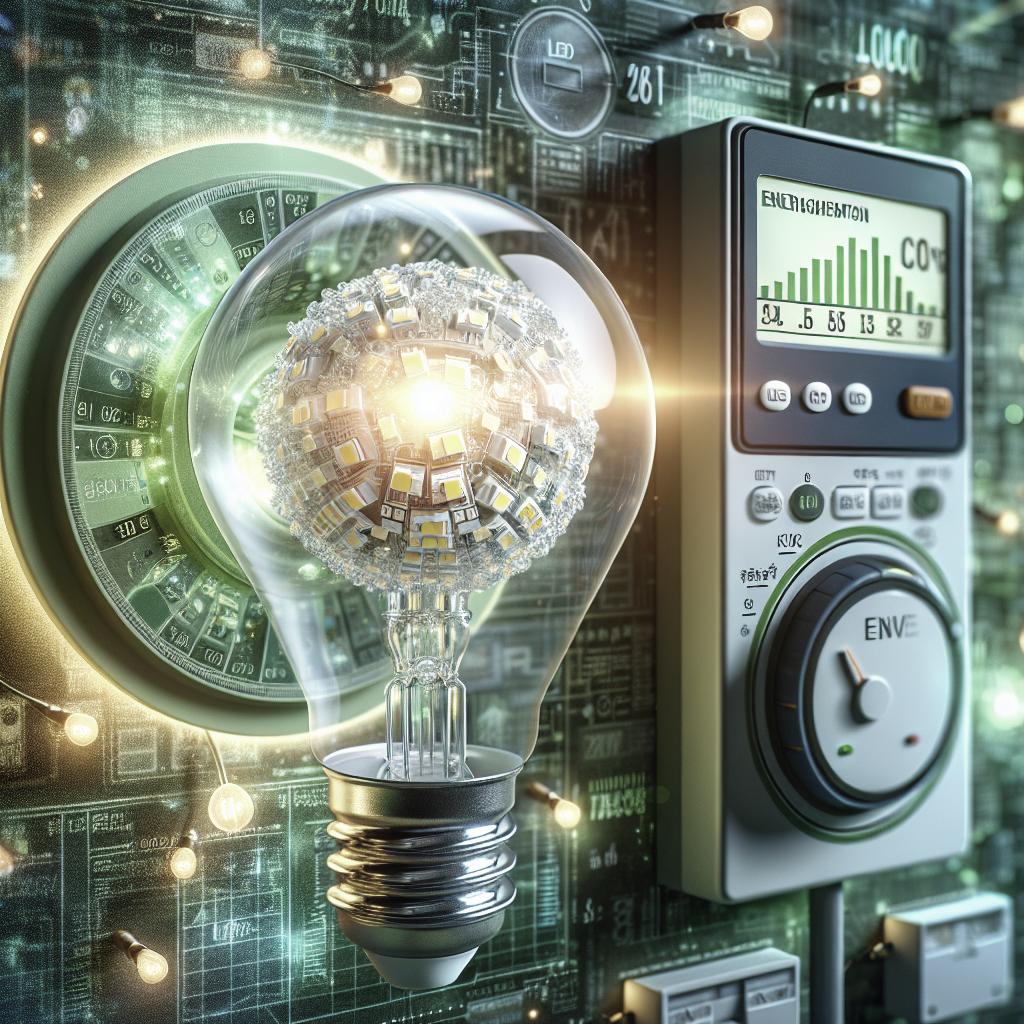LED Brightness and Energy Consumption
As the world becomes more focused on sustainability, understanding the energy consumption of lighting options is crucial. LED lights, known for their high efficiency and long lifespan, have become a popular choice for both residential and commercial use. This blog post delves into how much electricity LED lights use and their energy efficiency. It further explores the factors affecting LED power consumption and offers guidance on selecting energy-efficient LED lights for your specific needs. Whether you’re upgrading your home or optimizing lighting for a business, this comprehensive guide aims to illuminate your path towards more sustainable lighting solutions.
How much electricity do LED lights use?
LED lights are renowned for their ability to produce bright light with minimal energy consumption. Unlike traditional incandescent bulbs, which emit light through heated filaments, LEDs use semiconductors that convert electricity into light. This process is far more efficient, resulting in considerably lower electricity usage. Typically, an LED light bulb uses about 80% less energy than an incandescent bulb to produce the same amount of light.
The wattage of an LED bulb is significantly lower than that of its counterparts. For instance, a 10-watt LED bulb can produce the same brightness as a 60-watt incandescent bulb. Over time, this reduction in energy consumption can lead to significant cost savings, especially in settings where lights are used extensively. The transition to LED lighting not only benefits individual consumers economically but also contributes to broader environmental conservation efforts.
Energy Efficiency of LED Lights
LED lights are the epitome of energy efficiency in the lighting industry. Their ability to convert the maximum amount of electricity into light—rather than heat—distinguishes them from other lighting technologies. The efficiency of an LED light is typically measured in lumens per watt (lm/W), with many LEDs achieving upwards of 100 lm/W, which is a marked improvement compared to traditional lighting.
Furthermore, the longevity of LED lights contributes to their energy efficiency. LEDs have a lifespan of up to 50,000 hours, dramatically reducing the frequency of replacements and associated manufacturing impacts. This extended lifespan means that fewer resources are used over time, which is a critical advantage in reducing environmental footprints. Hence, investing in LED lighting supports both energy conservation and sustainability goals.
Factors that Affect LED Power Consumption
Several factors can influence the power consumption of LED lights. One primary factor is the quality of the LED components. Higher-quality LEDs tend to be more energy efficient and offer better light output. The design and engineering of the LED lamps also play a critical role; innovative designs can maximize light distribution while minimizing energy use.
Another factor is the presence of dimmable features. Dimmable LEDs allow users to adjust the brightness according to their needs, reducing energy usage when full brightness is unnecessary. Additionally, environmental conditions such as temperature can affect LED performance. LEDs generally operate efficiently across various temperatures, but extreme conditions can impact performance and longevity.
How to Choose Energy-Efficient LED Lights
Choosing energy-efficient LED lights involves considering several factors: lumens, wattage, and color temperature. Start by evaluating the lumens output, which indicates brightness level rather than focusing solely on wattage. This ensures you select a bulb that meets your brightness needs without unnecessary energy consumption. As a rule of thumb, a higher lumen count per watt indicates better energy efficiency.
Pay attention to the color temperature, measured in Kelvin, which impacts the ambiance of a space. Warmer colors create a cozy atmosphere, while cooler colors are suited for task lighting. Additionally, look for certifications like ENERGY STAR, which guarantees energy efficiency and performance standards. These strategies will not only help you choose the most efficient LED lighting options but will also enhance the lighting experience in your space.
Final Thoughts
In the quest for energy efficiency, LED lighting stands out as a clear winner. By understanding how much electricity LEDs consume, recognizing their efficiency, and learning about the factors that impact their consumption, you can make informed decisions. By selecting the right LED lights, you not only save on energy costs but also contribute to environmental sustainability. The transition to LEDs represents a step forward in lighting technology, offering long-term benefits for individuals and communities alike.
| Section | Key Points |
|---|---|
| How much electricity do LED lights use? | LEDs use about 80% less energy than incandescent bulbs, 10-watt LED equivalent to 60-watt incandescent. |
| Energy Efficiency of LED Lights | LEDs convert more electricity to light rather than heat; lifespan up to 50,000 hours. |
| Factors that Affect LED Power Consumption | Quality of components, design, dimmable features, and environmental conditions matter. |
| How to Choose Energy-Efficient LED Lights | Consider lumens, color temperature, and ENERGY STAR certification. |


